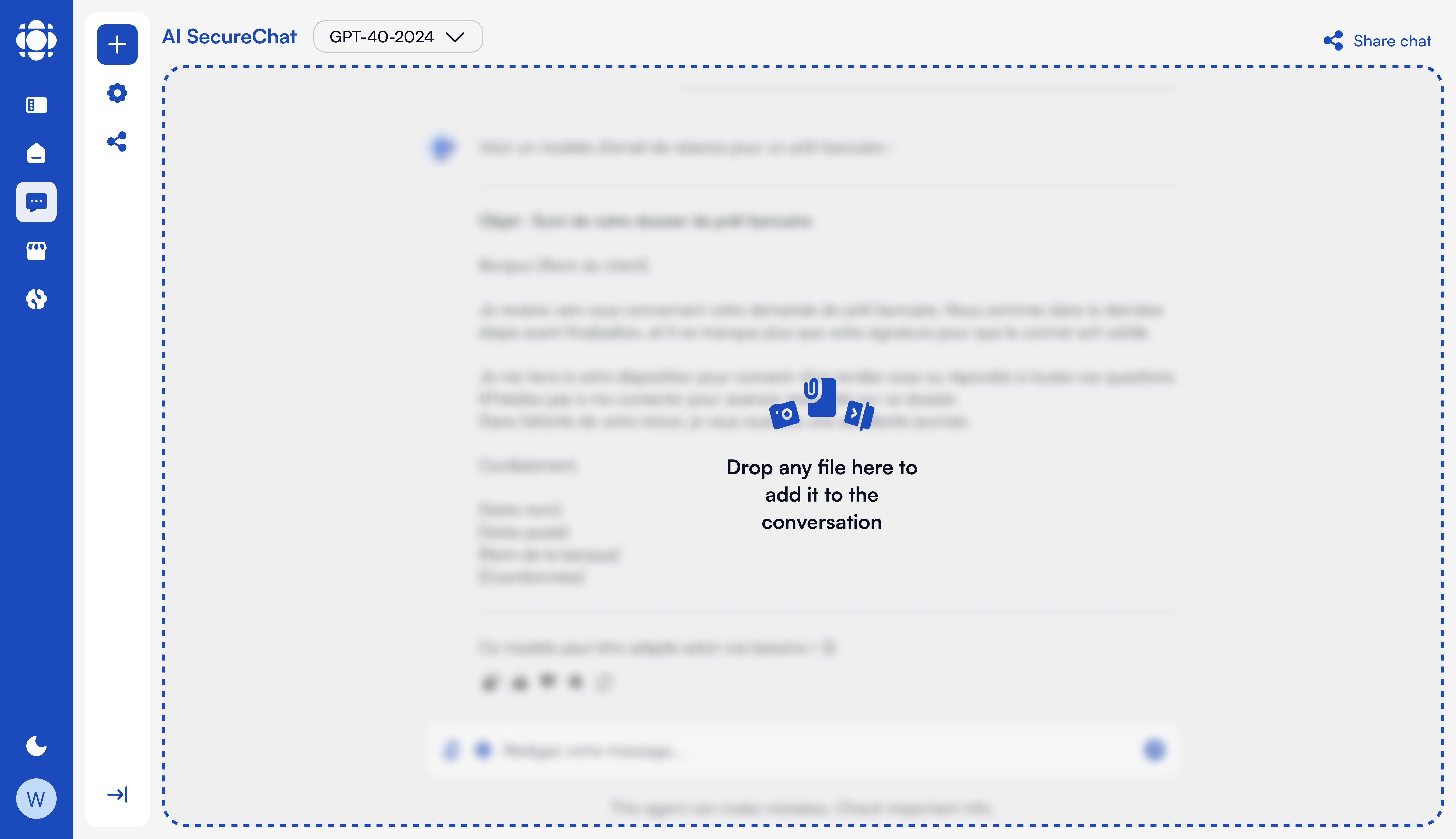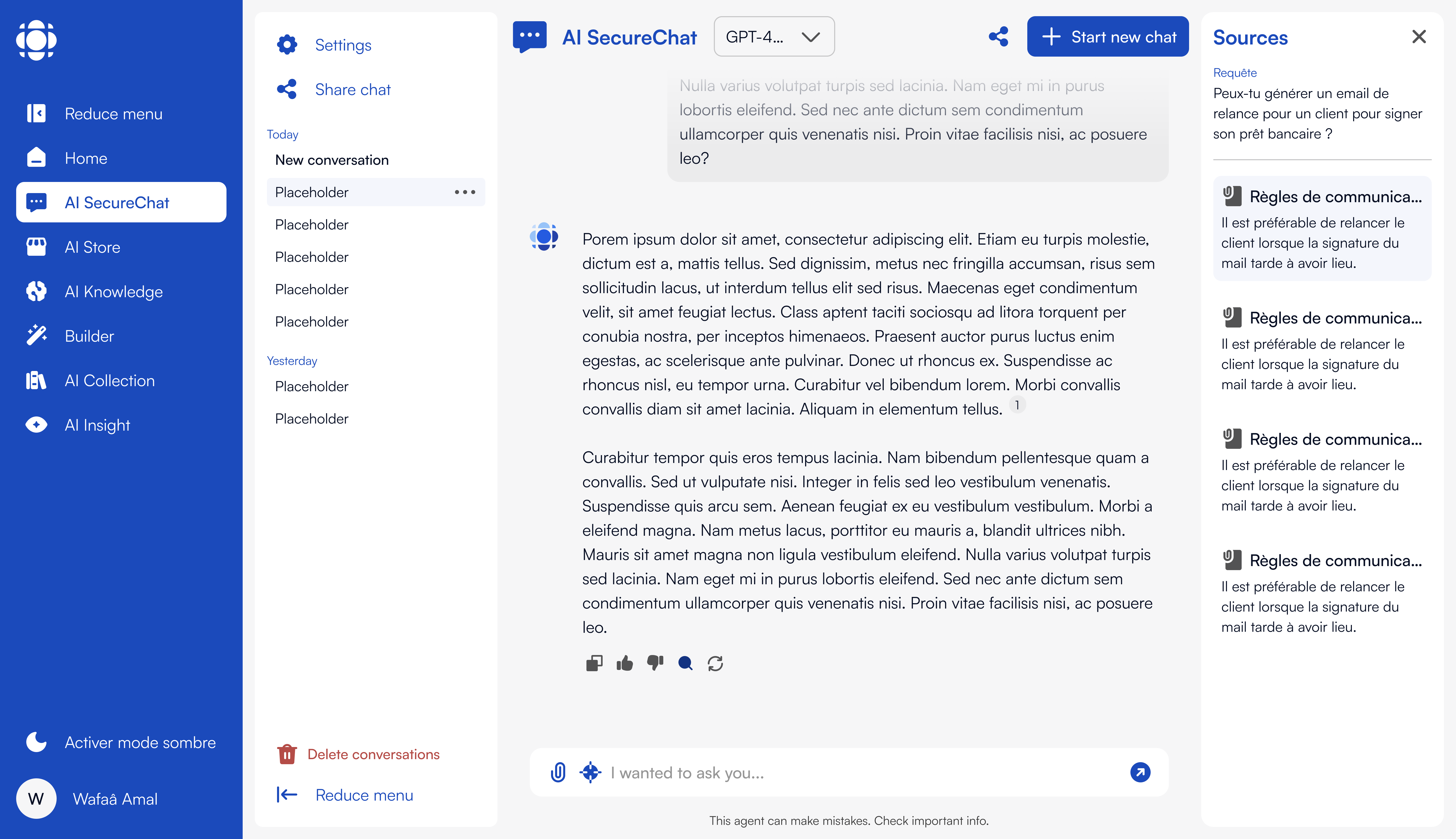What is Retrieval Augmented Generation?
RAG is an AI architecture that enhances large language models (LLMs) by connecting them to external knowledge sources. This approach allows models to access, retrieve, and integrate specific information that may be:- Beyond their training data
- Proprietary to your organization
- Frequently updated
- Highly specialized or technical
RAG addresses one of the key limitations of foundation models: their inability to access specific, up-to-date, or proprietary information not included in their training data.
Key Components
Knowledge Base
Processed repository of organizational documents and information
Retrieval System
Mechanism for finding relevant information based on user queries
Context Management
Processing of retrieved information for optimal use by the model
Generation System
Creation of responses that incorporate the retrieved information
When to Use RAG Agents
RAG agents are ideal when you need AI systems that can:- Answer questions about your specific products, services, or domain
- Provide accurate information from internal documentation
- Stay current with frequently updated information
- Generate responses grounded in factual, verifiable content
- Reduce hallucinations and fabrications in AI outputs
Benefits of RAG
Knowledge Accuracy
Responses grounded in verified organizational information
Reduced Hallucinations
Minimized fabrication of facts or details
Information Freshness
Access to the latest information, beyond model training cutoff
Source Attribution
Traceability to source documents and references
Domain Specificity
Expertise in your organization’s unique knowledge areas
Knowledge Control
Governance over what information the AI can access and use
RAG Architecture
The architecture of a RAG agent consists of several interconnected components:1
Document Processing
Converting raw documents into a format optimized for retrieval.

- Text extraction from various file formats
- Chunking of content into manageable pieces
- Embedding generation for semantic search
- Metadata extraction and enrichment
- Index creation and optimization
2
Query Processing
Transforming user questions into effective retrieval queries.Important components:
- Query understanding and classification
- Query expansion or reformulation
- Query embedding generation
- Metadata filtering and constraints
- Hybrid search strategy selection
3
Retrieval
Finding the most relevant information from the knowledge base.Retrieval approaches include:
- Semantic search using vector embeddings
- Keyword search for precise term matching
- Hybrid search combining multiple strategies
- Metadata filtering for context-specific results
- Relevance ranking and reranking
4
Context Assembly
Organizing retrieved information for optimal use by the model.Assembly considerations:
- Context window size limitations
- Information relevance prioritization
- Document structure preservation
- Source attribution maintenance
- Contextual framing for the model
5
Response Generation
Creating answers that incorporate the retrieved information.

- Integration of retrieved information
- Citation of sources
- Handling of conflicting information
- Management of uncertainty
- Response formatting and structure
Example Use Cases
- Technical Support
- Policy Guidance
- Research Assistant
- Knowledge Management
Purpose: Assist users with technical questions based on product documentationKey Features:
- Access to technical manuals and documentation
- Ability to retrieve specific procedures and specifications
- Troubleshooting guidance based on known issues
- Source attribution to official documentation
Implementation Steps
Creating an effective RAG agent involves several key steps:1
Define Knowledge Requirements
Identify what information the agent needs access to and how it will be used.Key questions to answer:
- What specific knowledge domains should the agent cover?
- What document types and sources will be included?
- How often does the information change or update?
- What level of detail is required in responses?
- Are there security or privacy considerations for certain content?
2
Prepare Knowledge Base
Collect, process, and structure the information for effective retrieval.Essential activities:
- Document collection and curation
- Text extraction and preprocessing
- Chunking strategy determination
- Embedding model selection
- Metadata definition and extraction
- Index creation and optimization
3
Configure Retrieval System
Set up the mechanisms for finding relevant information.Key configurations:
- Search strategy selection (semantic, keyword, hybrid)
- Relevance threshold determination
- Number of results to retrieve
- Reranking algorithms
- Metadata filtering rules
4
Design Context Management
Create processes for organizing and using retrieved information.Important considerations:
- Context window management
- Information prioritization
- Source attribution approach
- Handling conflicting information
- Managing information overload
5
Develop Prompting Strategy
Create effective prompts that guide the model in using retrieved information.Strategy elements:
- Clear instructions for information synthesis
- Guidance on source citation
- Handling of information gaps
- Uncertainty management
- Response structure and formatting
6
Test and Refine
Validate performance and iteratively improve.Testing approaches:
- Representative query testing
- Edge case validation
- Retrieval quality assessment
- Response accuracy evaluation
- End-user usability testing
Best Practices
Document Processing Optimization
Document Processing Optimization
The quality of your knowledge base is foundational to RAG performance.Recommendations:
-
Effective chunking strategy: Balance chunk size to capture sufficient context while remaining focused
- Quality embedding models: Use high-dimensional embeddings for better semantic representation
-
Metadata enrichment: Add metadata to improve filtering and relevance
- Regular updates: Establish processes for keeping the knowledge base current
Retrieval Tuning
Retrieval Tuning
By using the Builder with custom automation, you can fine-tune the balance between recall (finding all relevant information) and precision (avoiding irrelevant results), which is critical for optimal performance.Recommendations:
-
Hybrid search approaches: Combine semantic and keyword search for better results
-
Query reformulation: Generate multiple query versions to improve retrieval
- Reranking: Apply secondary ranking to improve result relevance
- Context-aware filtering: Use conversation context to narrow search scope
Context Assembly
Context Assembly
How you organize retrieved information significantly impacts response quality.Recommendations:
-
Context format standardization: Provide retrieved information in a consistent format
- Source prioritization: Place more relevant or authoritative sources earlier in context
-
Context instructions: Include explicit instructions for how the model should use the provided information
- Context window management: Be strategic about what fits in limited context windows
Response Generation Guidance
Response Generation Guidance
Clear instructions improve how models use retrieved information.Recommendations:
-
Source attribution requirements: Instruct on when and how to cite sources
-
Information synthesis guidance: Explain how to combine information from multiple sources
-
Handling information gaps: Provide clear guidance for when retrieved information is insufficient
- Uncertainty management: Establish how to handle varying levels of confidence
Common Challenges and Solutions
|
|
|
|
|
Advanced RAG Techniques
Once you’ve mastered basic RAG implementation, consider these advanced techniques:Multi-Stage Retrieval
Multi-Stage Retrieval
Using AI Builder, implement a cascade of retrieval steps to improve both efficiency and accuracy.Example Process:This approach is particularly effective for large knowledge bases where a single retrieval step may miss important information or retrieve too much irrelevant content.
Query Enhancement
Query Enhancement
Improve retrieval by transforming user queries into more effective search queries.Techniques:
-
Query expansion: Add related terms to improve recall
- Hypothetical document embeddings: Generate embeddings for the ideal documents that would answer the query
-
Query decomposition: Break complex queries into sub-queries
- Conversational context incorporation: Include relevant previous exchanges
Self-Verification and Correction
Self-Verification and Correction
Implement mechanisms for the agent to verify its own responses.Approaches:This process can significantly reduce hallucinations and improve accuracy, particularly for complex or nuanced topics.
Knowledge Graph Integration
Knowledge Graph Integration
With AI Builder, enhance your RAG system by integrating structured knowledge representation powered by Neo4j or a similar graph database.Benefits:
- Capture relationships between entities
- Provide structured context for ambiguous terms
- Enable reasoning across related concepts
- Improve query understanding through entity resolution
Implementation in Prisme.ai
Prisme.ai provides comprehensive support for RAG agent implementation through:- AI Knowledge
- AI Builder
The AI Knowledge product provides a no-code interface for creating RAG agents:

- Document processing and management
- Knowledge base creation and organization
- RAG configuration and optimization
- Agent creation and deployment
- Performance analytics and monitoring